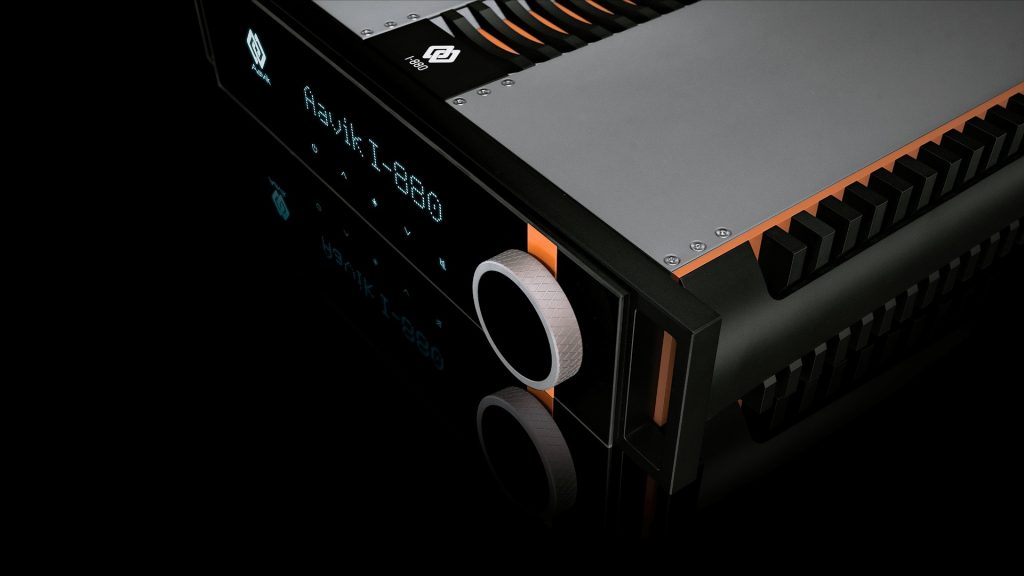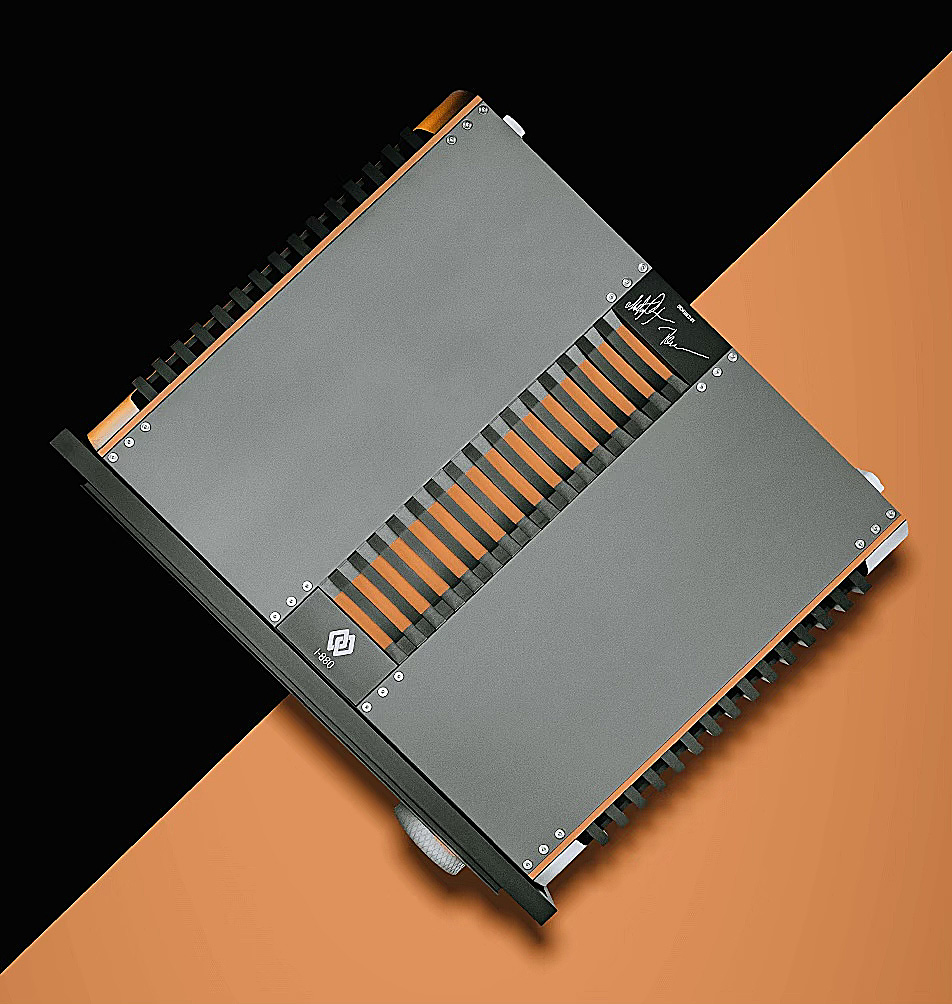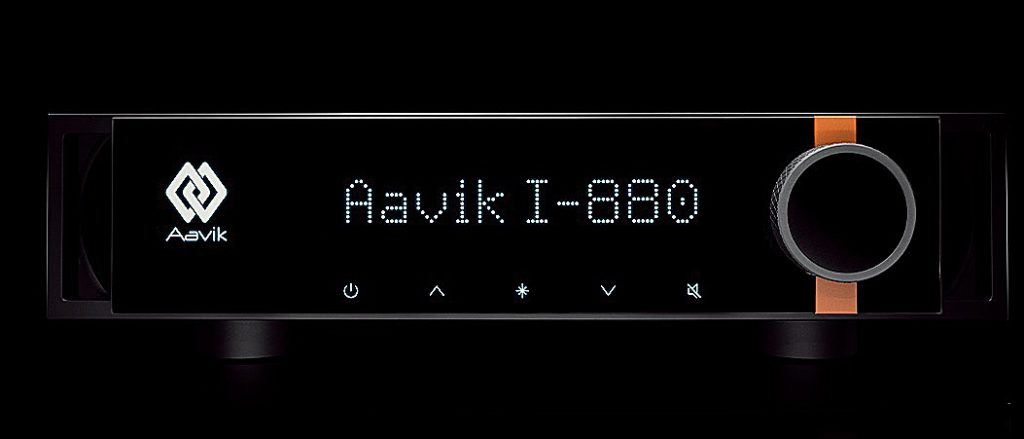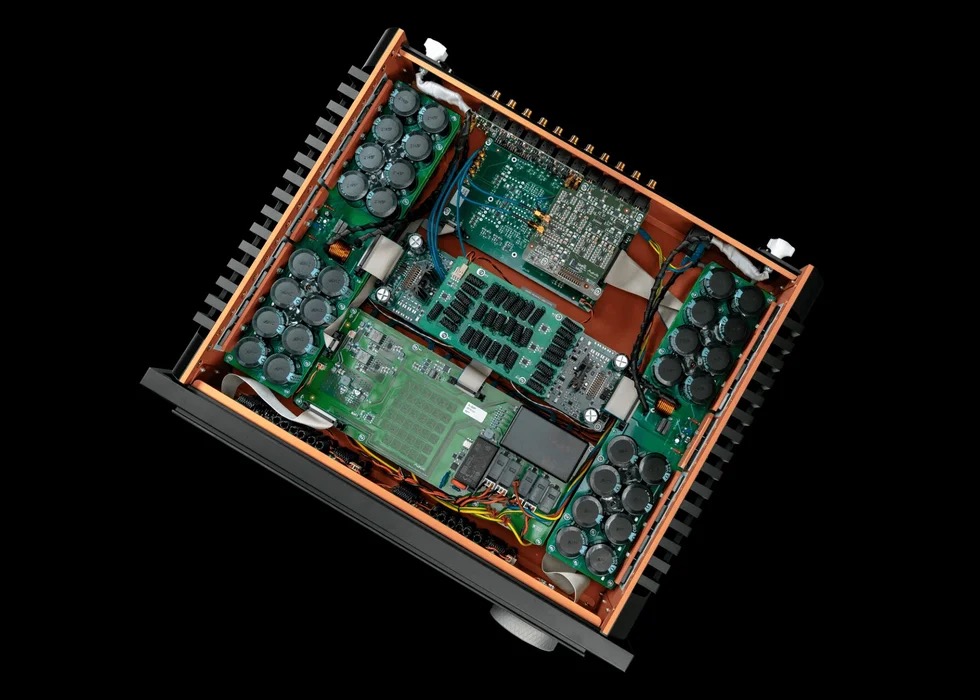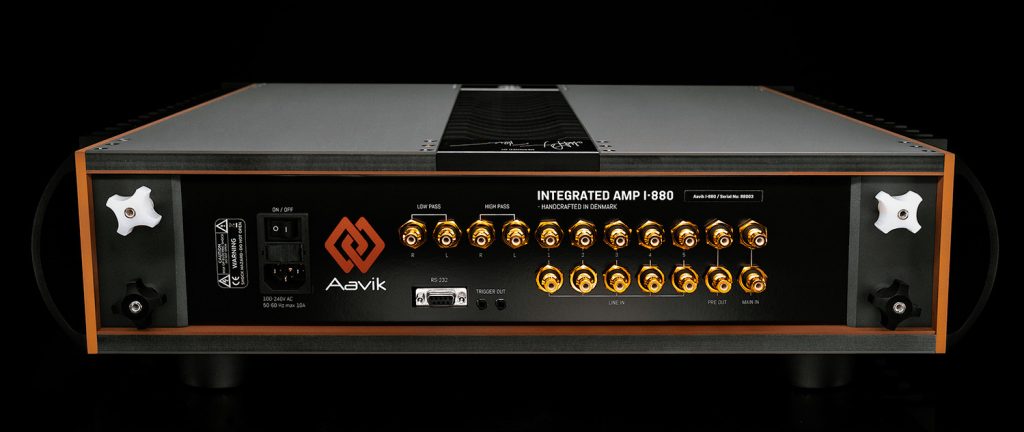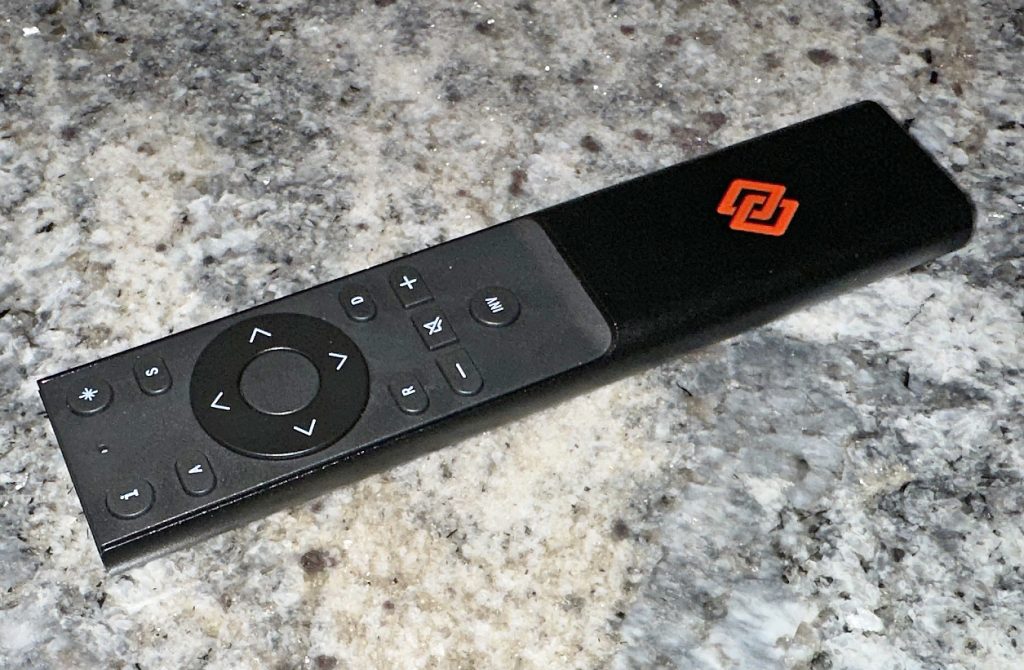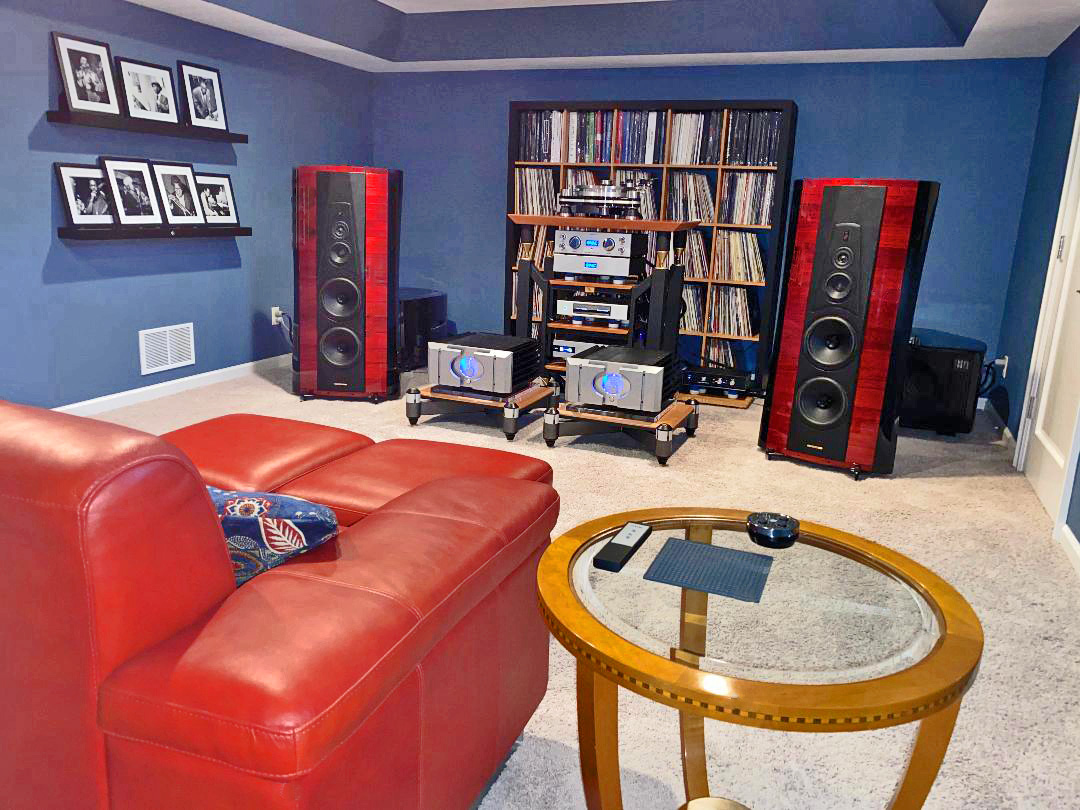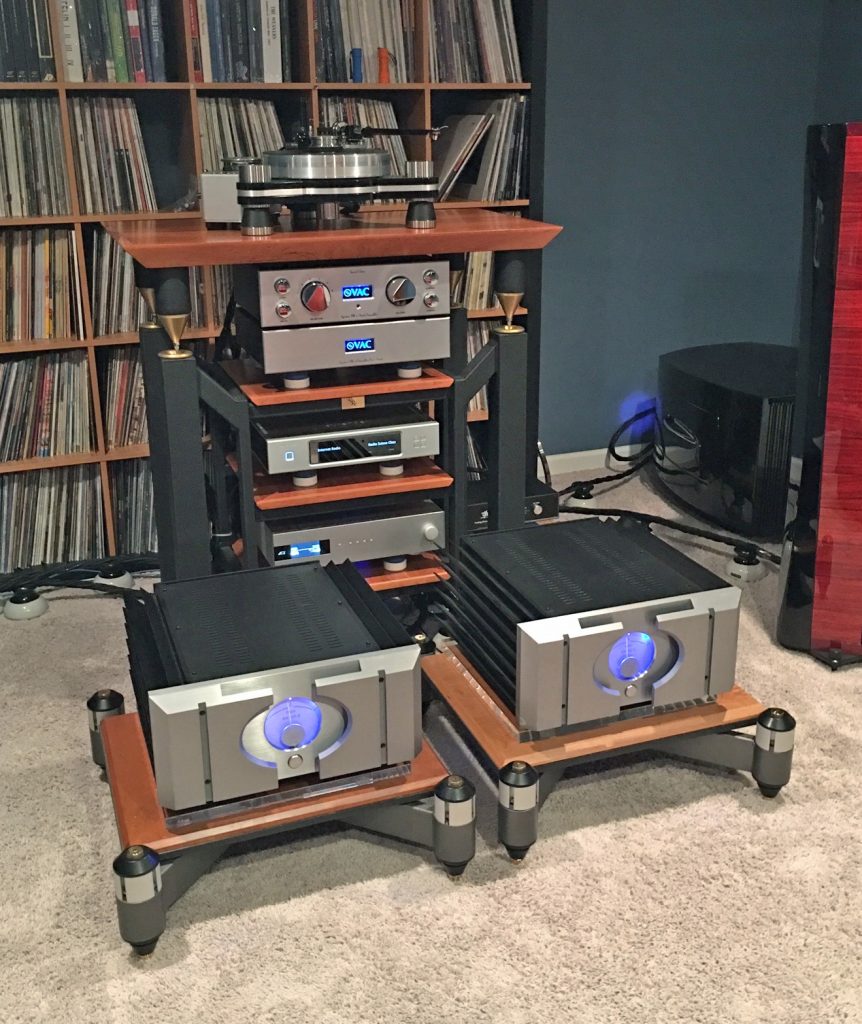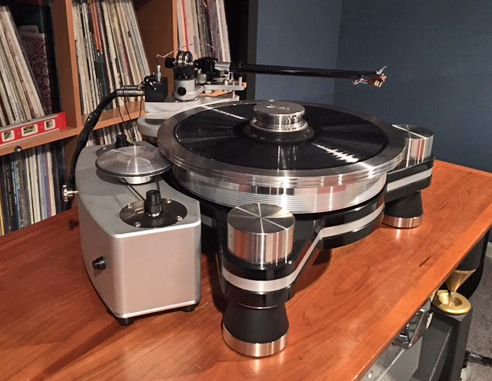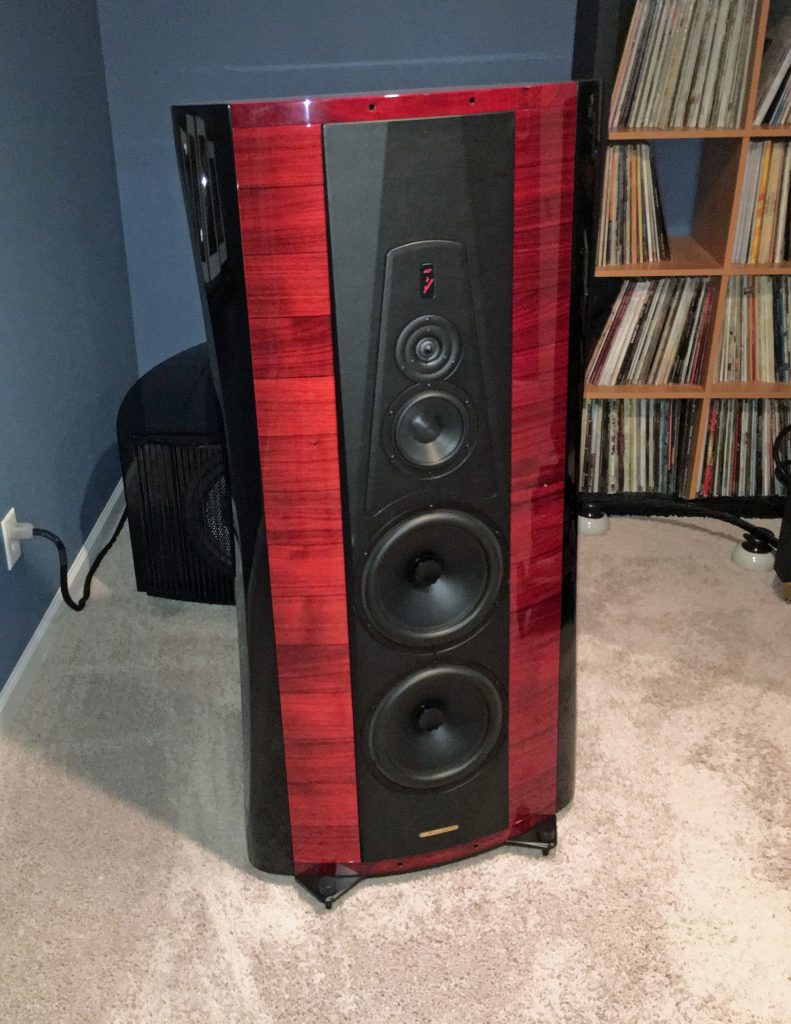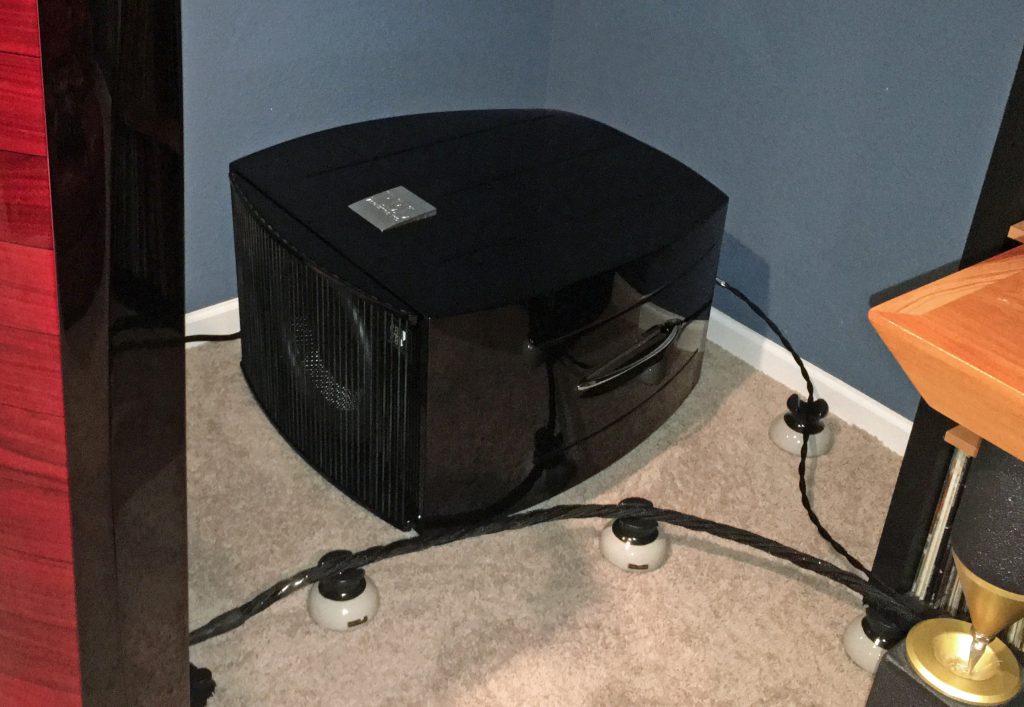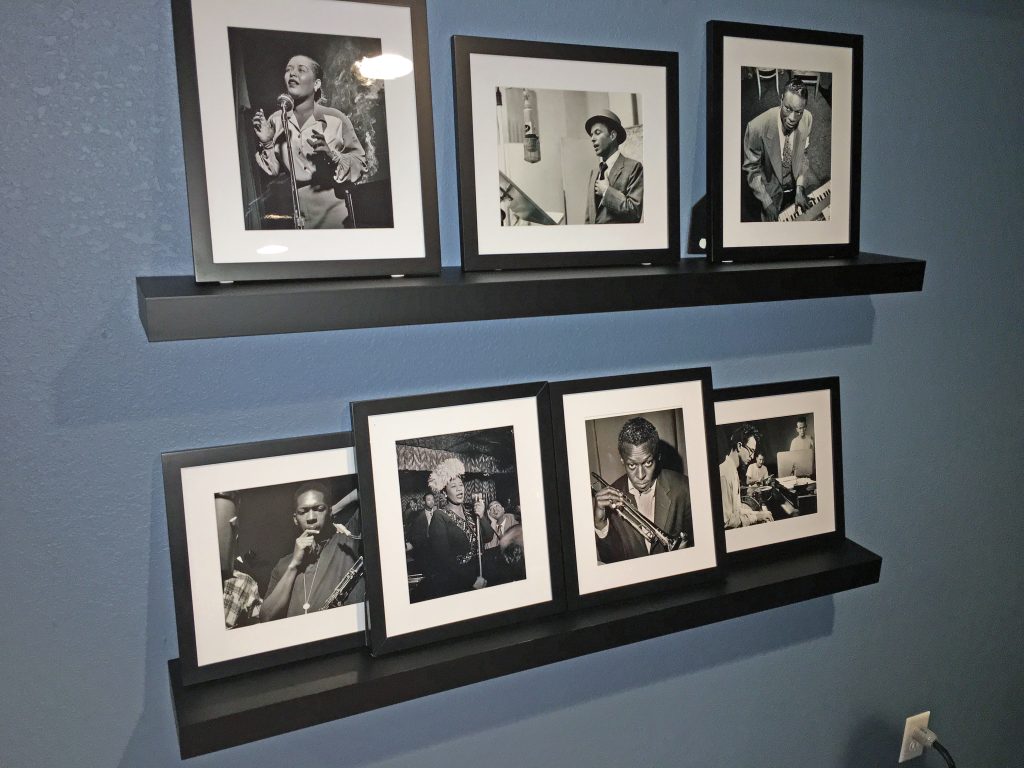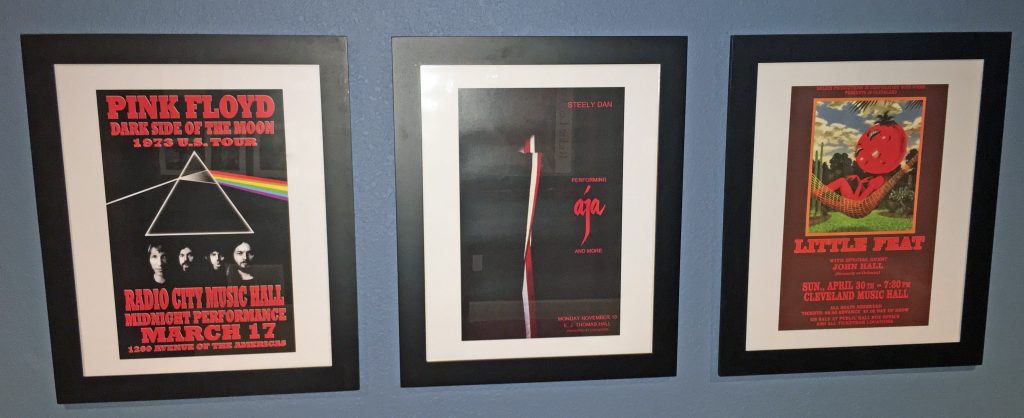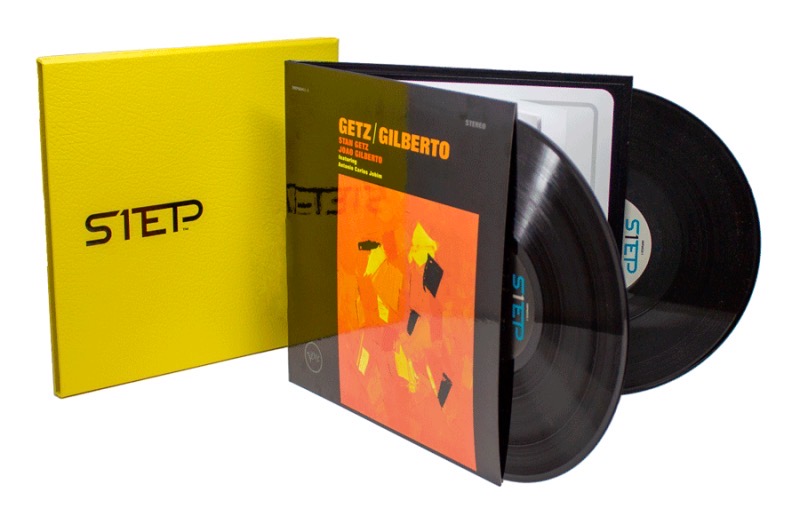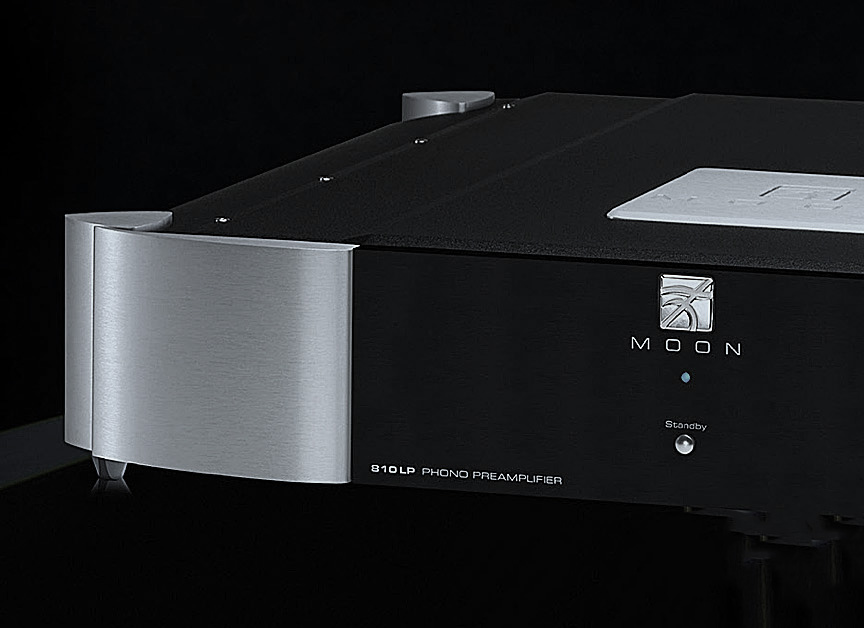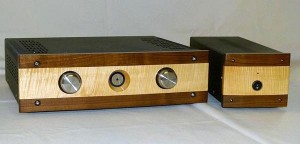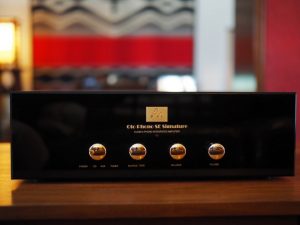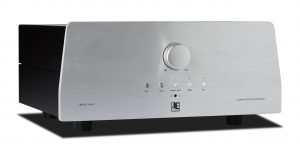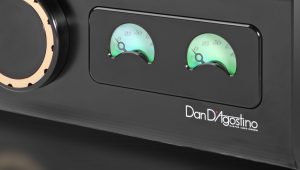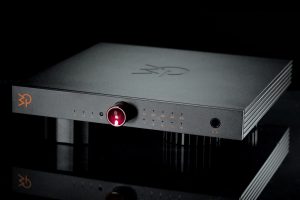Audio Group Denmark (AGD) is on a roll. If you take a look at some of the major high end show accounts for 2022 and 2023, the Audio Group Denmark rooms have been consistently reported as an important highlight at the show and always with a high buzz factor (and with good reason). Hard copy and on-line periodicals along with many Youtube channels have been singing their praise for both design and sound quality.
As a point of reference, Audio Group Denmark is an umbrella company with three primary brands: Aavik Acoustics, Ansuz Acoustics, and Børresen Acoustics. Aavik is focused on electronic components. Ansuz is focused on cabling, power and resonant control devices. Børresen is focused on speakers. Michael Børresen is the principle engineering and creative force. His business partner, Lars Kristensen, is all things business and marketing.
What I admire about the Audio Group Denmark portfolio, which offers virtually everything needed for a high end audio system from top to bottom, is that you have one vision and one voice from one design and engineering team. If there was ever an opportunity for synergy and component matching without constant trial and error, this is it! And equally impressive, is that they have products at many price points that will be appealing to many budgets.
The "ne plus ultra" for me at several of these shows, were the Børresen lineup of speakers. I found the sound quality to be some of the best that I have experienced at any show in recent memory. My wife, who rarely makes any purchasing decisions at these events, was also in strong agreement. She was ready to write a check almost immediatley after visiting several of the Børresen rooms at Axpona 2023! Midrange is her thing, and no one does it better than Børresen.
The portfolio and legacy continues to grow as does the success and admiration. Børresen has recently rolled out the new X3 speakers and at a very competitive price point ($11,000). The X3 speakers are now receiving rave reviews across the Internet and the brand is again in the spotlight. Trickle down technology at its best.
I have also taken a keen interest in the Aavik lineup of components. This includes an impressive family of DAC, streamer, preamp, amp and integrated amp options in the Aavik 180, 280 and 580 series. All are designed and priced appropriately for specific market segments and needs. Earlier this year, I reviewed the then flagship I-580 Integrated Amplifier. See that article HERE. Needless to say, I was wowed by the functionality, industrial design and performance. In particular, the innovative technologies used for circuit design and noise control are true differentiators.
A New Beginning
In 2021, Flemming Erik Rasmussen, founder and former owner of Gryphon Audio, joined Audio Group Denmark's design and development team. With 35 years of experience in the high end audio industry, he is considered by many as of one of our most esteemed industry icons. This new partnership with Michael Børresen, is a match made in heaven.
Flemming offers a unique skill set of creative and aesthetic abilities that often established new standards for the industry. Michael offers a long history of remarkable technical innovation and vision across all of the Audio Group Denmark product lines. As Michael has said on occasion, Flemming is the artist and Michael is the engineer. Their first collaboration is the new Aavik 880 flagship series which includes the new Aavik I-880 Integrated Amplifier. The Aavik I-880 is the subject of this review.
Appreciation
I want to thank "Team AGD," who have all been very supportive throughout this process. This includes Michael Børresen (Owner, Founder, CTO), Lars Kristensen (Owner, Founder, CSO/CMO), Flemming Erik Rasmussen (Design, Development), Peter Hansen (North American Sales Manager), and both Tyler Mueller and Joshua Jendryka of Next Level High HiFi in Wayne, Illinois. The Aavik I-880 is a fantastic bench mark and addition to my long term series for the very best in high end Integrated Amplifiers. Please see the list of my most recent Integrated Amplifier reviews by clicking on my name in red to the right and above.
Caveat Emptor
System synergy and personal taste are critical when evaluating high-end audio products. This review is based on my subjective requirements, my subjective ears, my specific system configuration, and my specific listening room. This combination is only one data point of many that exist out there for these components. Please consider my comments and analysis appropriately.
Review System
I have included a comprehensive list of all my components and a description of my listening room. Please click on my name in red above if this information is needed for reference and comparison purposes.
Key Specifications
At an MSRP of $70,000, the I-880 is a Class A design and is rated at 200-watts into 8 ohms and 400-watts into 4 ohms. The I-880 weighs in at 79 lbs. with the following dimensions: 22 ⁵³/₆₄ x 20 ⁵/₆₄ x 6 ⁷/₆₄ inches. Preamplifier distortion is rated at <0.005% (THD at 1kHz, 1V input). Amplifier distortion is rated at <0.007% (10W, 1 kHz, 8 ohm). The I-880 offers five single ended inputs and one single ended preamp output. A fully functional remote control is also provided.
Key Design Elements
There are several important design elements that differentiate the I-880 from the competition. Please see a subset below. I have not included all of the features here, as additional information and more detail can be found on the Audio Group Denmark website. Though I have slightly paraphrased some of these descriptions, I have left them mostly intact. I must compliment the folks at Audio Group Denmark, as they have done an excellent job of communicating the innovation and the technologies that are at the heart of these designs.
Before diving into this summary, let me make a few statements about the fit and finish of the I-880. The level of quality and care is simply outstanding! This assertion applies not only to the cabinet and chassis, but also at every level as you peal back the layers. When you take the top cover off, and check out the circuit design layouts and implementation, you can tell that these folks really take great pride in the execution of their designs. Even the over engineered "Rimowa" like metal shipping case sets new standards for the industry. Bravo AGD!
Cabinet
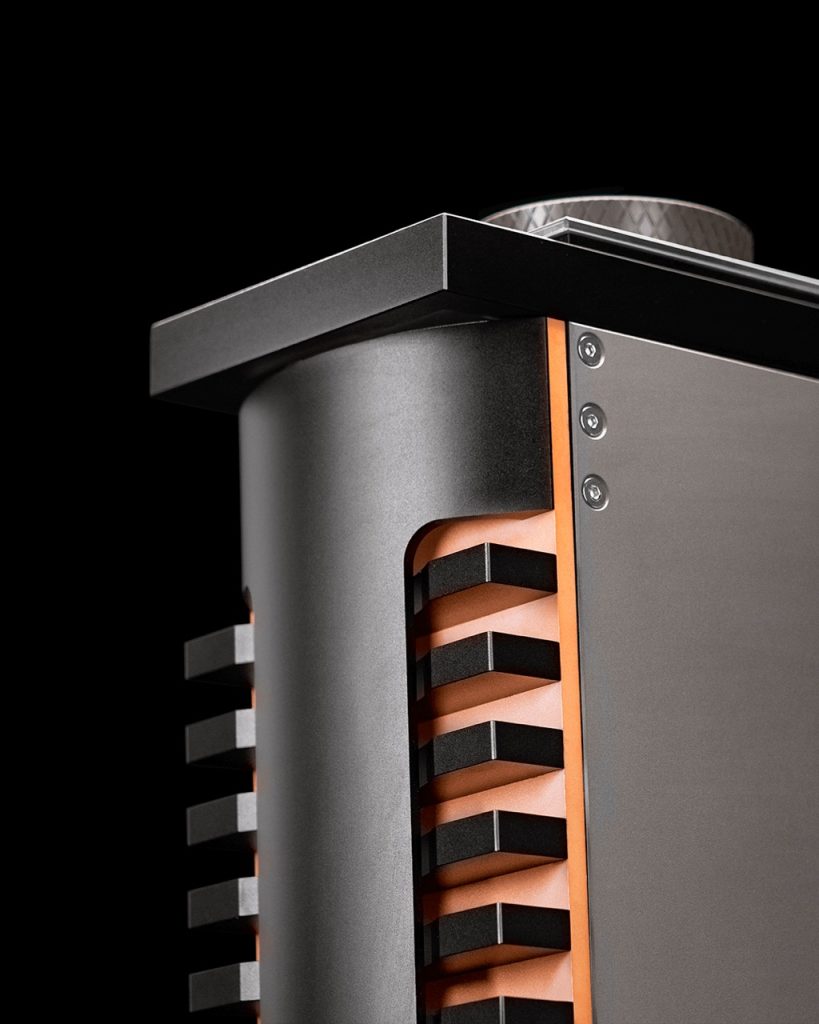
The choice of materials for the I-880, as well as the interior and exterior design, are all characterized by functionality, but also by a very aesthetic and elegant execution. Some of the most interesting things about this collaboration, is the commitment to and the study of materials and shape. Again, as both Michael and Flemming have stated when discussing the I-880, everything must have a purpose. Everything has a tone and impact on the sound.
Based on Flemming's fascination with copper for its visual appearance and feel, and Michael's insight into the sonic properties of copper, this material was chosen as a fundamental component of the cabinet design. As a result, the I-880 features a solid copper enclosure. This results in a further reduction in hysteresis, lower output impedance, lower inductance, a positive effect on the damping factor, and cooler operation of the amplifier. All these factors are said to ensure that the music is reproduced with more energy and power.
The I-880 features cooling elements on the sides and top that clearly bear Flemming's design signature. The large circular volume knob is covered with a rubber layer for superior feel and control, and the control panel was designed as a large LCD touchscreen display. The bottom plate is designed as a sandwich construction with a copper plate, a heavy compact laminate plate, and a titanium layer on the bottom. This unique sandwich construction ensures minimum resonance and supports a natural and organic sound.
From the pictures included here, you can see that the I-880 has a unique and very appealing industrial design and profile. If you re-examine some of Fleming's most quintessential designs from back in the day at Gryphon, you can definitely see his impact. Refined, intrinsic and highly functional are all terms that come to mind! Bottom line, and in my humble opinion, this component looks absolutely incredible. Pictures do not do it justice.
Power Supply
To avoid switching, Class A amplifiers typically apply a high constant current to the output devices. This approach is not only associated with high power consumption but also adversely affects sound quality. The traditional Class A power supply consists of a large transformer and large capacitor banks.
A large transformer has two downsides. First, the many windings create undue induction, which in turn means transient delay. Second, these many windings create stray capacitances, which cause high-frequency noise from the mains to enter the amplifier. Michael and his team of engineers took on the challenge and found another way to prevent the power amplifier from switching over.
They designed a circuitry that constantly keeps the bias spread 0,63 V above the required current, no matter where it is in the cycle. So, no matter how much current the power amp requires to perform, it always stays in Class A up to an impressive 2×200 W into 8 ohms, while at the same time not consuming unnecessary power.
This significant reduction in the power requirements of the amplifier section, allowed Aavik to design the capacitors as smaller units and place them locally, so that essentially each of the eight pairs of output transistors has its own capacitor bank right next to it. This means that the current does not have to flow through long wire harnesses and long circuit boards. The current is always directly at the output transistor, which means a shorter signal path and therefore less noise. In addition, this innovative Aavik design also means that the I-880 does not get as hot as conventional Class A amplifiers, resulting in higher efficiency.
The power supply for the Aavik I-880 is designed with Aavik's resonant-mode power supplies, which ensure sufficient power resources with extremely low noise. The noise floor in the raw power supply is extremely low, but is further reduced by the ultra-low noise regulators that power the various parts of the circuit. The smaller size of the power supply also means fewer windings and therefore less induction and lower transient delay, which has a positive effect on the soundstage and musicality.
The Use of Optical LDR Based Components
The LDR (Light Dependent Resistor) is extremely quiet thanks to its switchless principle. This significantly reduces the noise floor and ensures a natural sound without suppressing subtle sound details. The traditional MOS-FET switch arrays and relays create much more noise. They suppress subtle sound details and unnaturally color the tone. The I-880 includes a switchless optical input board and a switchless optical gain section. Both are LDR based.
Noise Suppression Technology Table
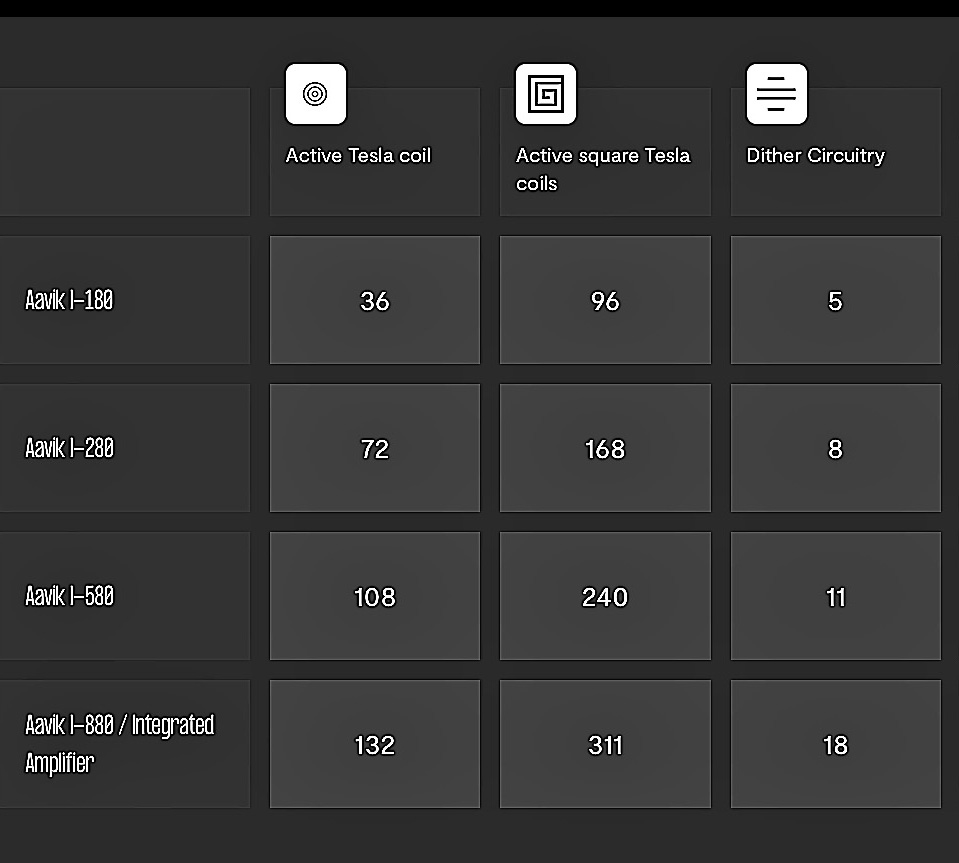
Tesla Coil Technology
When Aavik designs new audio equipment, one of the main tasks is always to eliminate as much unwanted noise as possible to provide uncompromising musical authenticity. This, of course, also applies to the I-880. In pursuing this goal, Audio Group Denmark has learned that many technologically groundbreaking advances in product development of its three individual brands, Ansuz, Aavik and Børresen, can often be leveraged across all of the brands. Therefore, Audio Group Denmark has integrated its most effective Tesla coil technologies from the most advanced products of their three brands into the I-880.
Tesla coil technology aims to remove as much unwanted noise as possible from any musical performance to ensure uncompromised musical authenticity. The principle of Tesla coil technology is based on two coils wound against each other: a coil and a counter coil. In Ansuz's words, "a double inverted coil"—the two coils both carry voltage.
When the Tesla coil encounters a voltage spike, a counter coil is activated to eliminate the noise. Since noise spikes are pure voltage and carry virtually no charge, cancellation is quite good, but still not 100%. However, when multiple P-TC coils are connected in parallel, their ability to cancel noise increases significantly, reducing the noise level to unprecedented levels. This significantly improves the perceived blackness of the music background.
Please see the table above for the level of noise suppression devices for each of the Aavik Integrated Amplifier models. As you move up the ladder and approach the flagship I-880, you will note the increased level of Tesla coil and active Tesla coil implementation.
Analog Dither Technology
Analog dither technology originates from radar, where it provides a stronger signal and thus a much greater range. Active Tesla coils emit pulsating signals with precisely defined frequencies. These signals are sent in anti-phase. This significantly amplifies the music signal and eliminates background noise.
Many Ansuz audio products are equipped with this analog dither technology, as it has proven to greatly enhance the quality of sound reproduction. Recently, Ansuz has introduced a 3rd generation of this Ansuz analog dither technology. An even more advanced and sophisticated version that reflects Ansuz's recent research efforts to refine this technology by calibrating the pulsating frequencies even more accurately. The result is a musical authenticity articulated in a more balanced and natural soundstage. The new I-880 also features this latest version of Ansuz's analog dither technology.
Again, please see the table above for the level of noise suppression devices for each of the Aavik Integrated Amplifier models. As you move up the ladder and approach the flagship I-880, you will note the increased level of Tesla coil and active Tesla coil implementation.
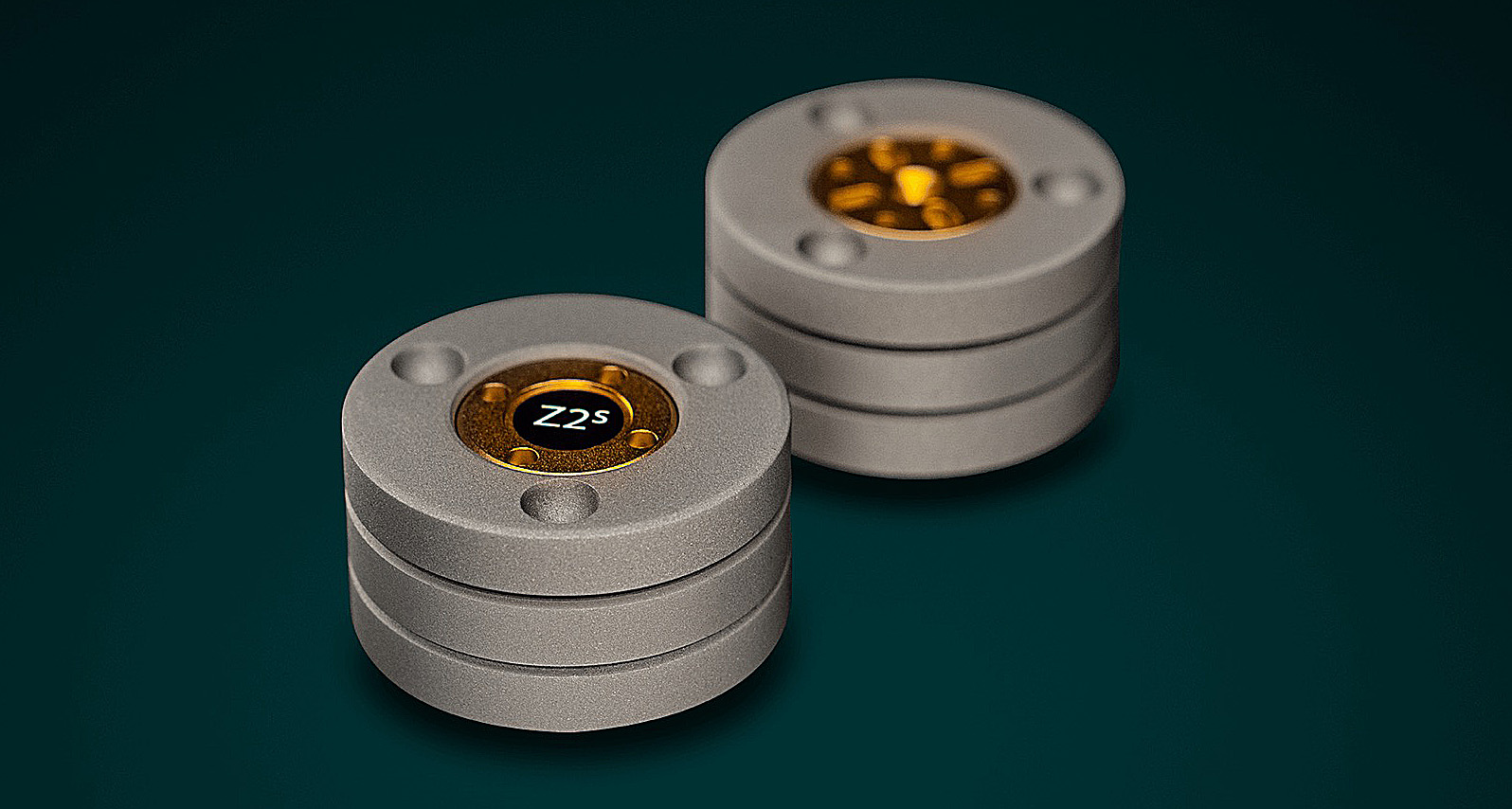
Ansuz Darkz Resonance Control Devices
Each of the Aavik I-880's four feet is designed to accommodate an Ansuz Darkz resonance control device. Four Ansuz Darkz Z2s are therefore always included when you buy an Aavik I-880. Ansuz Darkz resonance control devices absorb vibrations that are not directly related to the signal path. The absorption results in an audible vibration feedback, which affects the sound quality.
Ansuz Darkz consist of 3 discs separated by 3 titanium interlayer balls. The Ansuz Darkz Z2S is unique due to the zirconium which is used in it. The resonance control from using zirconium results in additional musical refinement. The Darkz Z2 Signature is further acoustically optimized with the exclusive Ansuz Signature coating on each disc. Finally, the interalyer balls are in Tungsten, which is a premium material in terms of stability and resonance control. The result is a natural soundstage, with additional purity, precision, and attention to musical details.
Sound
Over the years, I have evaluated many products from the minds of Michael Børresen and Lars Kristensen at both Raidho Acoustics and now Audio Group Denmark. We can also add Flemming Erik Rasmussen and his designs at Gryphon Audio to the discussion. For almost every product, these folks get the midrange and bass right. The I-880 is just another example.
One thing that you never yearn for with the I-880 is more low end. The goal is not just the proper delivery of power and weight, but also a certain level of inner detail and texture. You don't want bloat and muddiness. You want to feel and almost see the strings plucked or raked on an acoustic bass as the musician drives a small jazz quartet forward. You want to be physically connected to the sound waves and the dynamic punch unleased by the very best Progression Rock groups when the synthesizers kick in. You want the iron fisted control and muscularity of a 100 piece symphony orchestra at full crescendo to come shining through. The I-880 delivered over and over on this, and maybe better than any other Integrated Amplifier that I have reviewed.
The mids on the I-880 are full bodied and wonderfully fleshed out. You can really hear all of the advantages of a Class A design. There was a very slight sense of additional bloom and seduction—but never overdone. Just a relaxed and natural presentation. Female and male vocalists had an ease and purity that were very close if not the equal of the VAC electronics (tube) in my current system. Saxophone and piano had amazing levels of harmonic tone and structure. Remember, its all subjective, but to my ears this was some of the finest solid state midrange that I have heard in my listening room.
It was the highs that were the surprise and delight of my review. I had to work a little harder than normal to get it right, but after repositioning my Sonus Faber Strads a few times to find the correct rake angle, the results were glorious. Why a surprise? Again, for a solid state design, there was a coherency and correctness to the level of attack and decay that was something new to my ears—especially for digital. You know it when you hear it. The clarity and definition of the upper registers provided a harmonic brilliance and lucidity that stood out on virtually every recording—never any strain or hardness. The lack of listening fatigue in the highs allowed my sessions to go on and on for many hours.
Soundstage and imaging were also excellent. The I-880 yielded a measure of precision and definition that can compete well with the very best that separate components can offer. Micro and macro dynamics were off the chart. There was a sense of air and ambiance that afforded a whole new level of enjoyment with my Sonus Faber Strads—not something that the Strads are really known for. The I-880 took the most complex recordings and provided a solid layering and three dimensionality that would satisfy even the most discerning listener.
Music
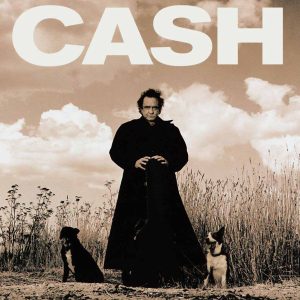
Johnny Cash, American Recordings (Qobuz 44-Bit/16kHz)
Released in 1994, this first album in the American Recordings Johnny Cash series, produced by Rick Rubin, is an outright classic. The "Beast in Me," written by Nick Lowe, is one of my go to tracks for midrange evaluation. You can often get a "shouty" and very muddled presentation, but the I-880 really brings out the deep rich sonic texture of Johnny's voice with plenty of raw inner density and breathy delivery. This is obviously later in Johnny's career, but he still has the energy and chops to communicate the emotion of the storyline and it comes through clearly here. The entire American Recordings is a must have for both fans and audiophiles!
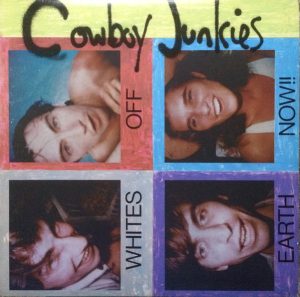
Cowboy Junkies, Whites Off Earth Now!! (Qobuz 24-Bit/192kHz)
Whites Off Earth Now!! is quite possibly the most underrated of the Cowboy Junkie's entire discography. Released in 1986 just before the infamous The Trinity Session album, it has the feel and the sound quality of the later, with possibly even more emotion and drive. "Take Me," is a closely mic'd simple recording with just guitar and Margo Timmins on vocals. The incredible dynamics of Michael Timmins on his Gibson ES-335 Electric is always a good test for soundstage, imaging and overall resolution. The I-880 takes it to another level. Michael is virtually standing before you with a guitar tone and life like presence that will have you sitting up straight in your listening chair. The raspy crunchy sound of the ES-335 comes through loud and clear! Margo hovers stage right and you can just feel the yearning and desire in her voice!
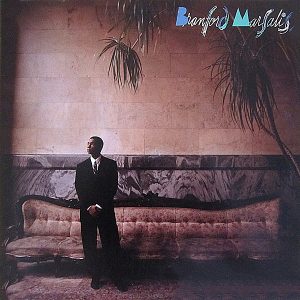
Bradford Marsalis, Trio Jeepy (CD Rip 44-Bit/16kHz)
No disrespect to Wynton, but Bradford is my favorite of the Marsalis Family. Trio Jeepy was produced by brother Delfeayo Marsalis, who is said to be a big believer in a very simple all analog recording chain. It shows nicely here, as Bradford on sax and Jeff "Train" Watts on drums steal the show on the opening track entitled "Housed From Edward." The reedy woody transient speed of Branford's saxophone is quite astonishing. The solo by Watts at the end of this track has the explosive force and agility that only the very best high end systems can demonstrate. All of this with a soundstage and imaging that will allow you to pick out the exact locations of each. This is especially bewitching, when Bradford on occasion turns away from the mic, and at certain points moves from left to right in his excitement. The I-880 adds that little bit extra to make this recording and performance even more exceptional!

Yoel Levi (Conductor), Atlanta Symphony Orchestra, The Planets by Gustav Holst (Qobuz 44-Bit/16kHz)
Not the finest interpretation of The Planets by Gustav Holst, but a true sonic spectacular and a great low end test for every high end audio system. Recorded in the Woodruff Performing Arts Center in Atlanta by Michael Bishop, this recording can separate the men from the boys. "Mars" will bring back fond memories of both the Star Wars and The Gladiator soundtracks. There is an explosiveness and authority to the bottom octaves of this piece that is difficult to reproduce properly. The loudest fortissimo verses the lowest pianissimo can be mind blowing, but the I-880 handles it with ease! Plenty of rumble in the jungle when the performance escalates! So much fun!
Final Thoughts
In retrospect, I continue to reflect on what I experienced and heard with the Aavik I-880. Do we now have that one component that will finally resolve the questions surrounding the integrated verses separates issue?
Rarely do we find an integrated amplifier with such innovation and advanced technologies. This includes, but is not limited to those realized for resonance control, noise suppression and power supply. Rarely do we have the ability to enjoy the advantages of Class A sound, but in such an efficient and effective manner. Even beyond the technology, and for those with a very discriminating eye, should we consider the I-880 a beautiful piece of art? Should it be the center piece of of your listening room and proudly displayed so that all can see?
The Aavik I-880 Integrated Amplifier clearly responds to all of these challenges and more. Truly a tour de force designed and built by two master craftsmen! Congrats to Michael Børresen, Flemming Erik Rasmussen and the entire AGD Team! Very highly recommended!
Ansuz I-880 Integrated Amplifier
Retail: $70,000
Audio Group Denmark
Rebslagervej 4
9000 Aalborg Denmark




